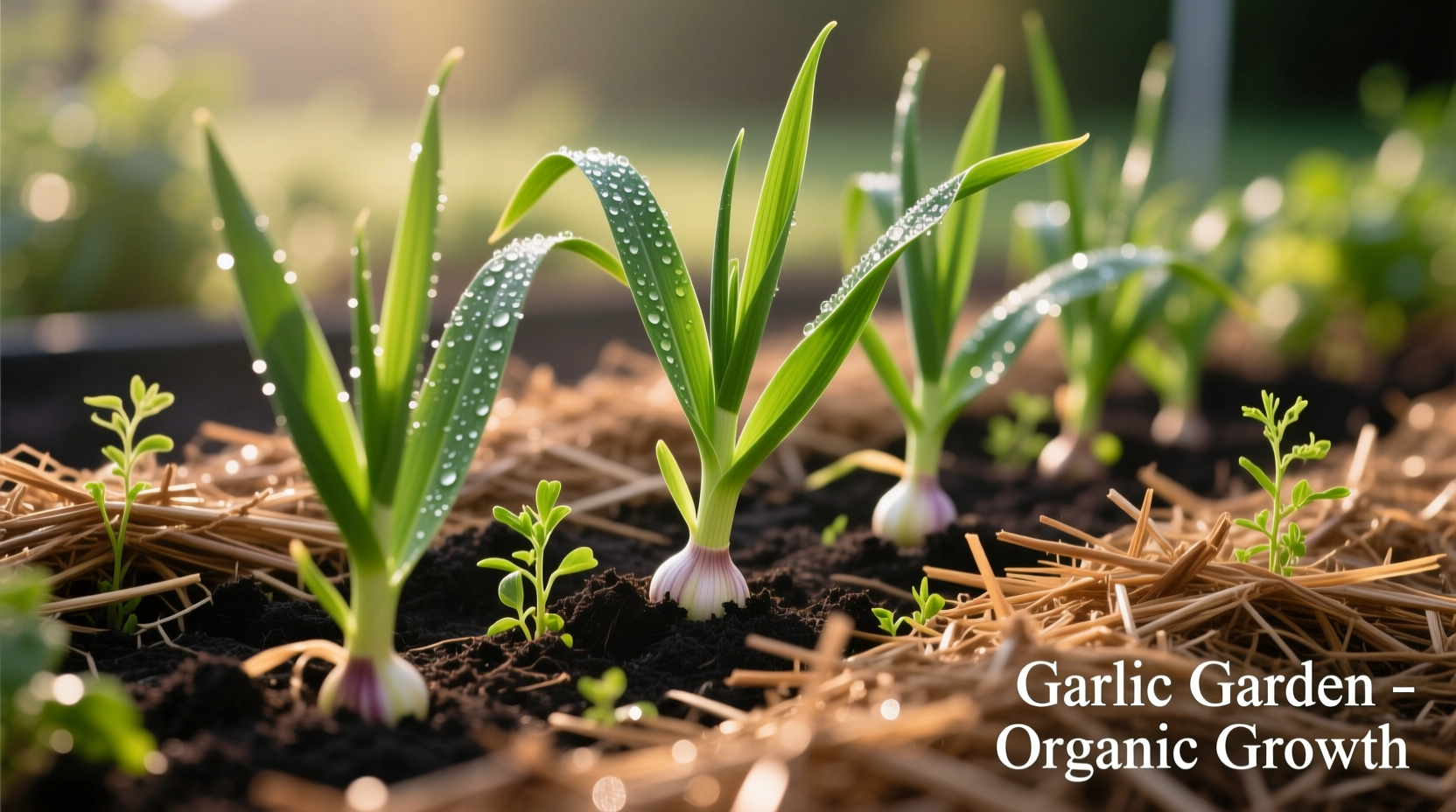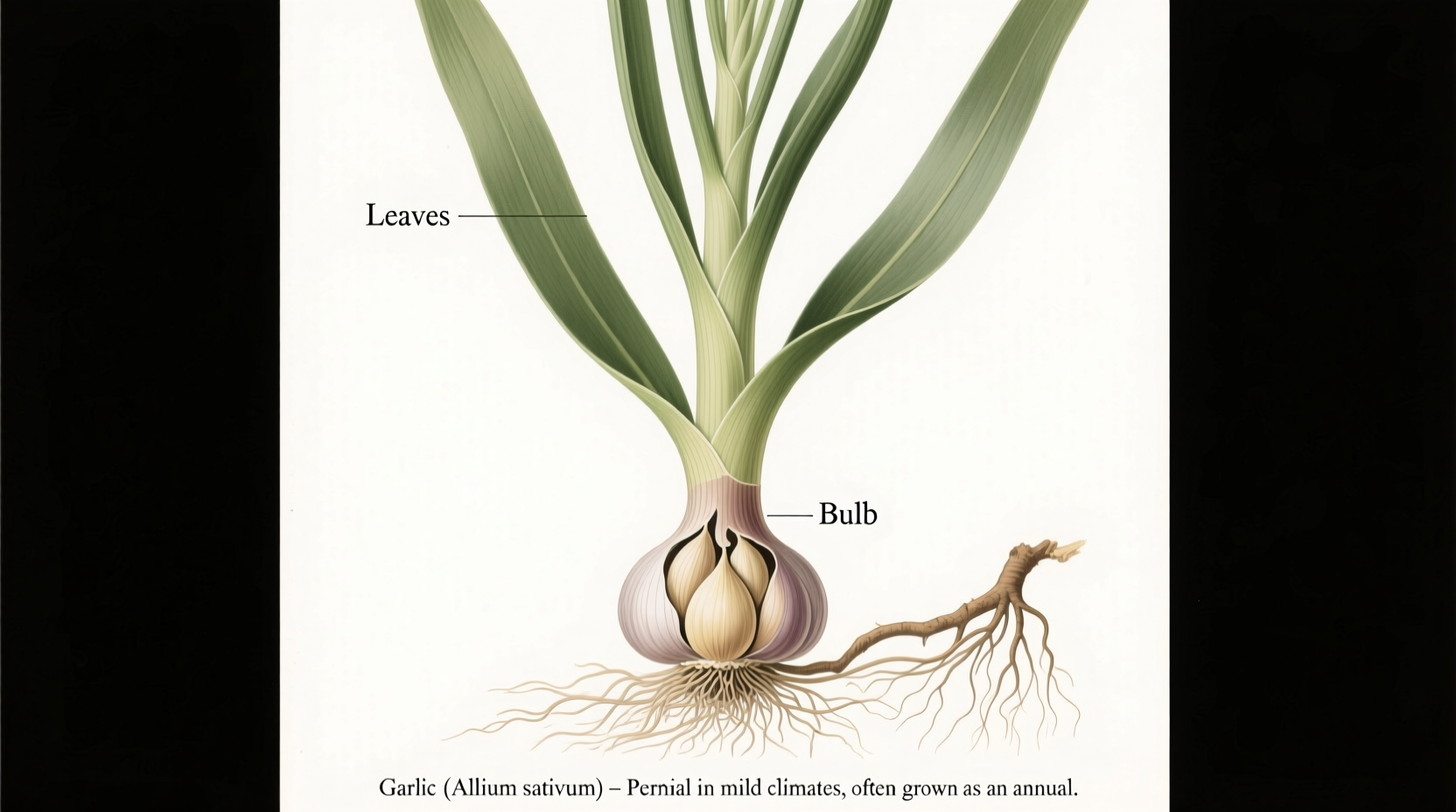Yes, garlic (Allium sativum) is technically a perennial plant that gardeners typically grow as an annual crop. While it belongs to the perennial Allium family, most cultivars are harvested within one growing season. However, certain hardneck varieties can thrive as true perennials when properly managed in suitable climates.
Understanding garlic's botanical nature transforms your gardening approach. This comprehensive guide reveals how to leverage garlic's perennial characteristics for sustainable harvests while avoiding common cultivation mistakes that reduce bulb quality.
Garlic's Botanical Identity: Perennial by Nature
Garlic (Allium sativum) belongs to the Amaryllidaceae family, sharing genetic traits with other perennial alliums like onions and leeks. Unlike annual vegetables that complete their life cycle in one season, garlic possesses the biological capacity to regrow from its bulbils or cloves year after year when conditions allow.
According to the USDA Plant Database, garlic's perennial classification stems from its ability to form underground storage structures that survive winter dormancy. However, commercial growers and home gardeners typically harvest the entire plant before it completes its multi-year cycle.
| Garlic Type | Perennial Potential | Best Climate Zones | Harvest Timing |
|---|---|---|---|
| Hardneck (Ophioscorodon) | High - regrows reliably | 3-8 | Late spring/early summer |
| Softneck (Sativum) | Moderate - less cold hardy | 4-9 | Late summer |
| Elephant Garlic | Low - biennial behavior | 2-10 | Mid-summer |
Why Gardeners Treat Garlic as an Annual
Despite its perennial nature, most gardeners harvest garlic within one growing season for practical reasons:
- Bulb size optimization - Second-year bulbs often produce smaller cloves as energy redirects to flower stalks
- Disease management - Continuous planting increases soil-borne pathogen risks according to University of Minnesota Extension
- Rotation benefits - Allowing soil recovery maintains nutrient balance for subsequent crops
- Flavor concentration - Single-season growth produces more intense, complex flavors preferred by chefs

Successful Perennial Garlic Cultivation
If you want to grow garlic as a true perennial, follow these evidence-based practices verified by Cornell University's Garlic Production Guide:
Site Selection and Preparation
Choose well-drained soil with pH between 6.0-7.5. Amend with 3 inches of compost before planting. Perennial garlic requires deeper soil preparation (12-18 inches) compared to annual cultivation (8-10 inches) to accommodate developing bulb structures over multiple seasons.
Planting Strategy
Plant individual cloves 4-6 inches deep in mid-autumn (4-6 weeks before first frost). Space plants 6-8 inches apart in rows 12-18 inches apart. For perennial systems, use wider spacing (10-12 inches) to reduce competition as plants mature.
Seasonal Management Timeline
Successful perennial garlic requires specific seasonal interventions:
- Fall - Plant cloves, apply 4-6 inches of straw mulch after ground cools
- Winter - Maintain mulch layer; avoid disturbing soil
- Spring - Remove mulch when shoots emerge; apply balanced organic fertilizer
- Summer - Harvest scape flowers from hardneck varieties; monitor soil moisture
- Autumn - Thin overcrowded plants; replenish mulch before winter
Common Misconceptions About Garlic's Growth Cycle
Gardeners often misunderstand garlic's perennial potential due to these widespread myths:
- "Garlic must be replanted every year" - While common practice, hardneck varieties readily regrow when left in ground
- "All garlic types behave the same" - Hardneck varieties demonstrate stronger perennial characteristics than softnecks
- "Perennial garlic produces inferior bulbs" - With proper management, perennial systems yield consistent harvests for 3-5 years
The Royal Horticultural Society confirms that garlic's perennial nature varies by cultivar, with Rocambole and Purple Stripe hardnecks showing the strongest regrowth capacity.
Practical Tips for Sustainable Garlic Production
Whether growing as annual or perennial, these techniques maximize your harvest:
- Rotate planting locations every 3-4 years to prevent disease buildup
- Leave 10-15% of your harvest in the ground for natural propagation
- Use organic mulch to maintain consistent soil temperature
- Harvest scapes from hardneck varieties to redirect energy to bulb development
- Test soil annually and amend with calcium if needed to prevent basal plate rot
When Perennial Garlic Isn't Recommended
While garlic can grow perennially, certain conditions make annual cultivation preferable:
- Regions with USDA hardiness zones above 9 where winter chilling requirements aren't met
- Soil with poor drainage that increases bulb rot risk during wet seasons
- Gardens with limited space where crop rotation is challenging
- When growing softneck varieties which have weaker perennial characteristics
For gardeners in warmer climates, the University of California Cooperative Extension recommends treating garlic as an annual with fall planting and summer harvest to accommodate local growing conditions.
Conclusion: Maximizing Your Garlic Harvest
Understanding garlic's true perennial nature empowers you to make informed cultivation choices. While most gardeners harvest annually for optimal bulb size, hardneck varieties can provide sustainable perennial harvests with proper management. By aligning your approach with garlic's biological characteristics and your specific growing conditions, you'll enjoy consistent, high-quality harvests year after year.











 浙公网安备
33010002000092号
浙公网安备
33010002000092号 浙B2-20120091-4
浙B2-20120091-4